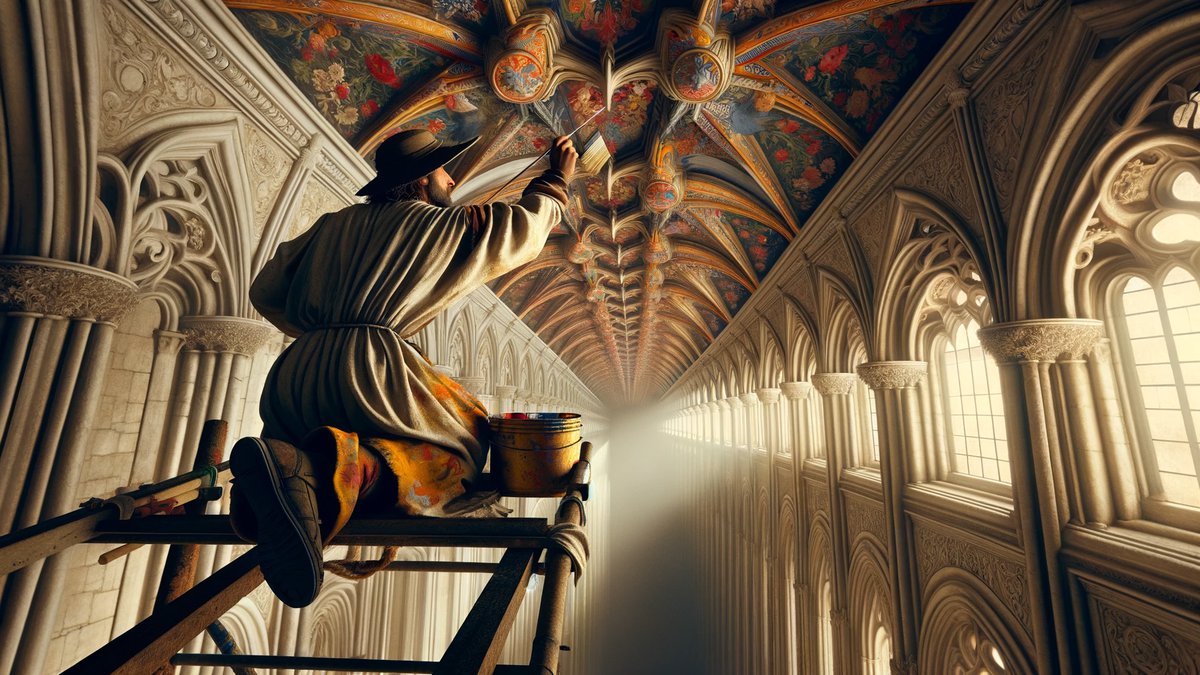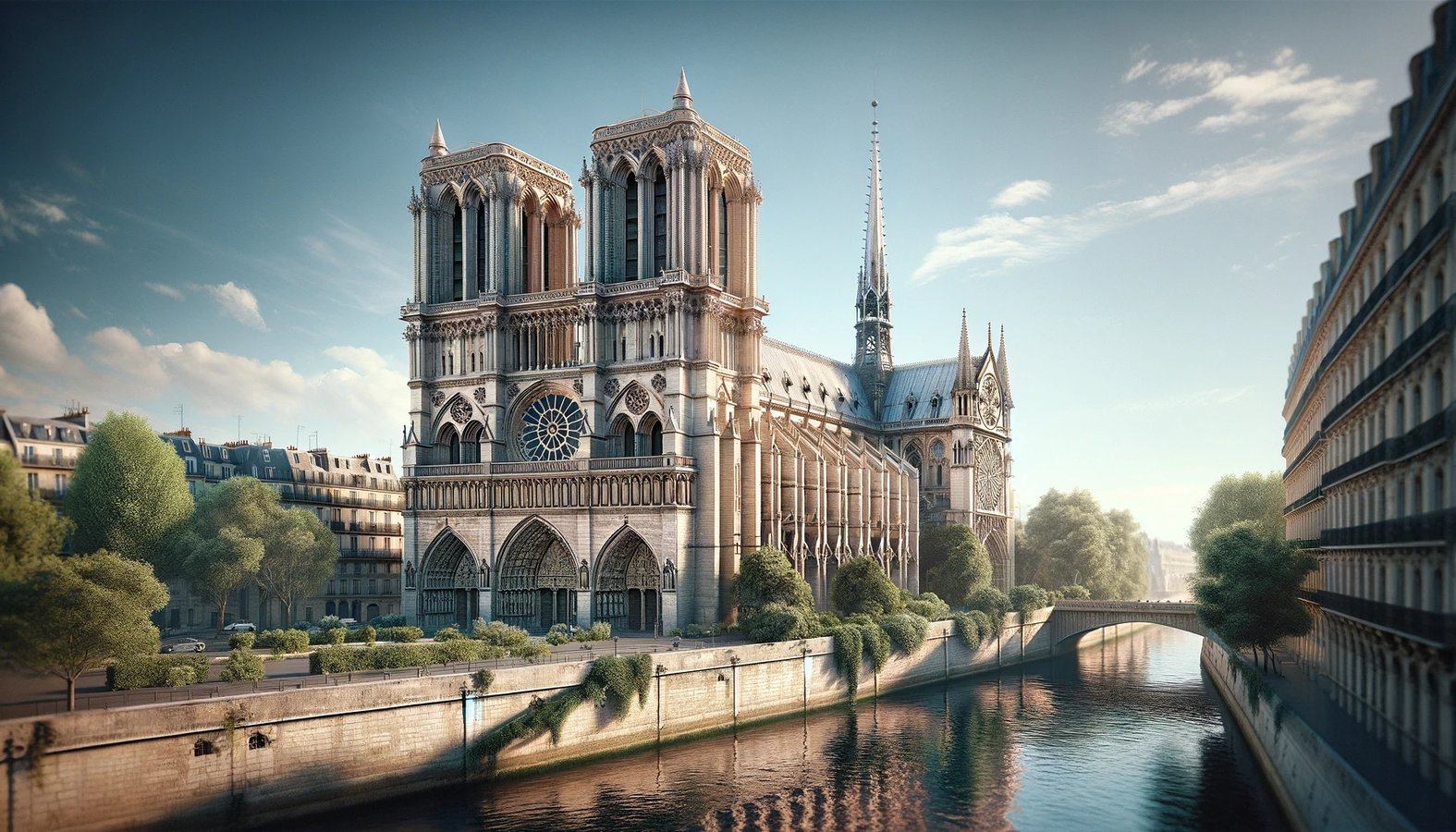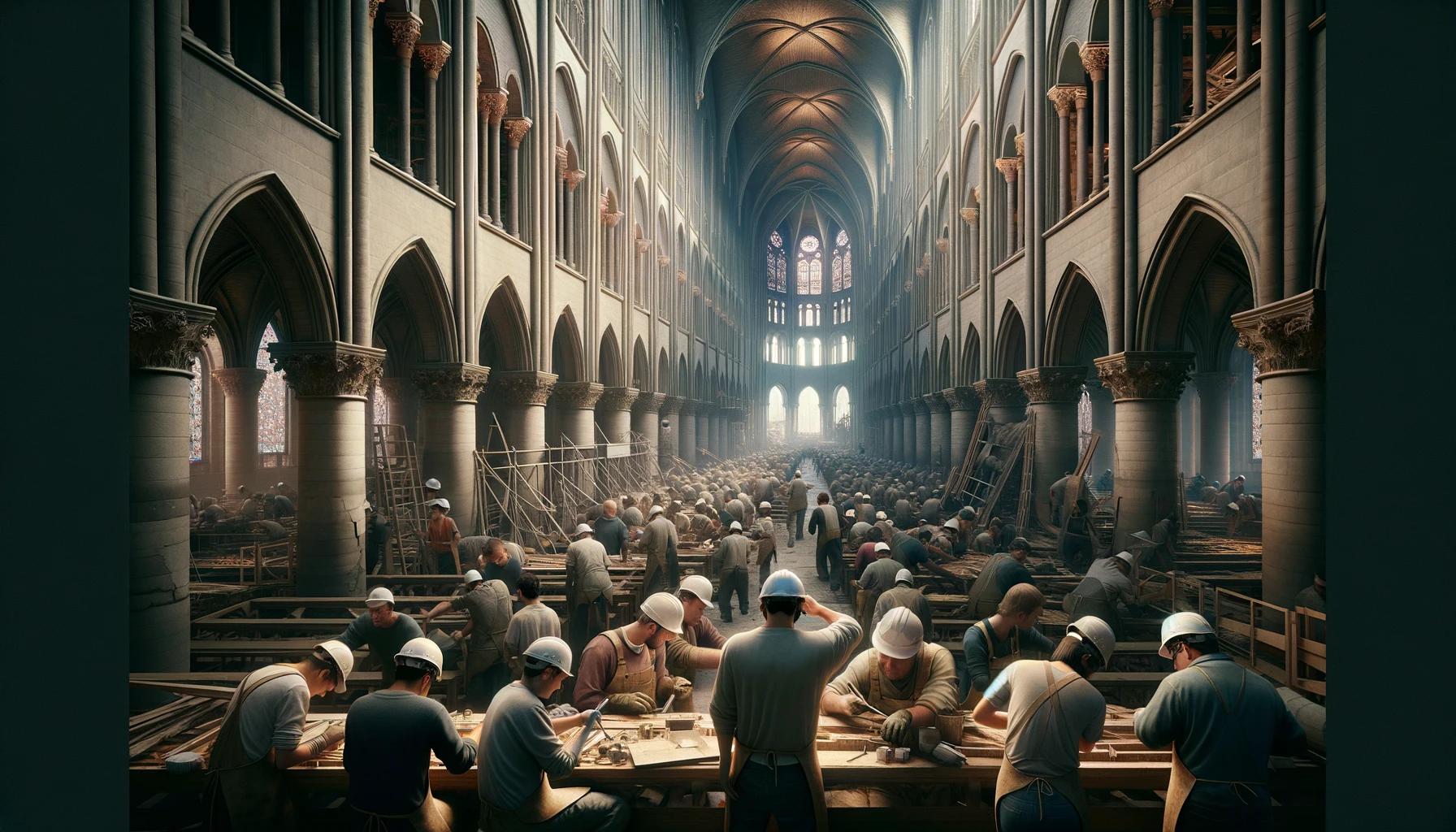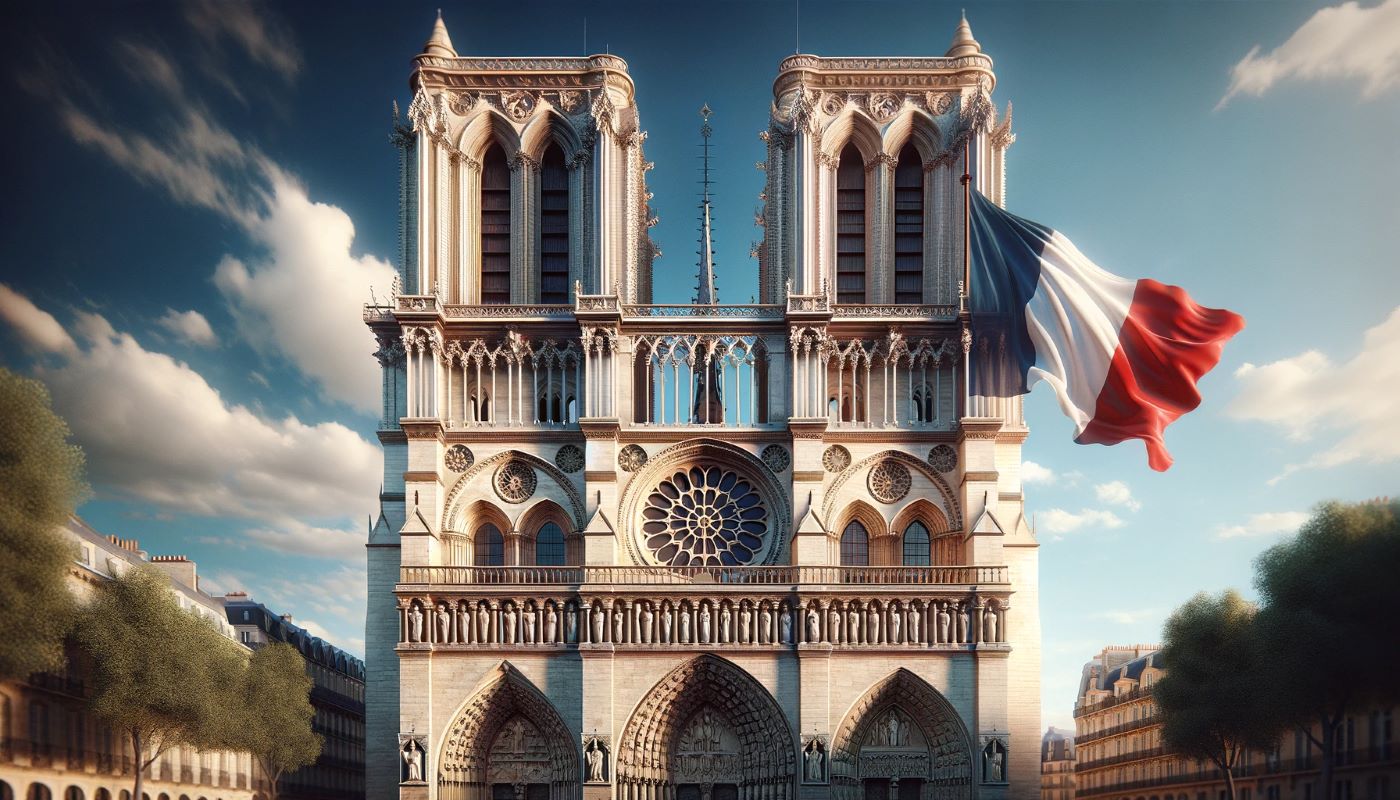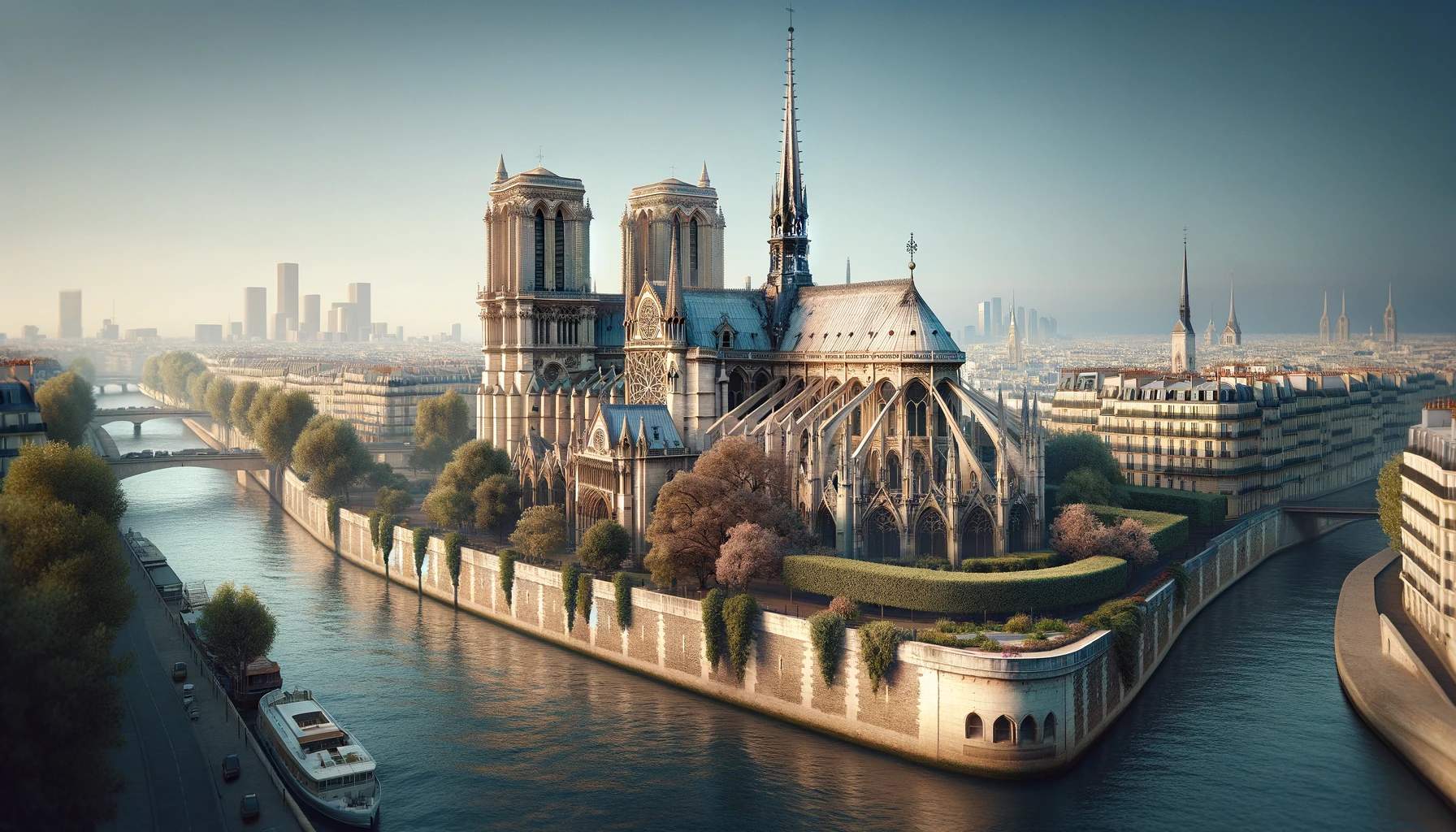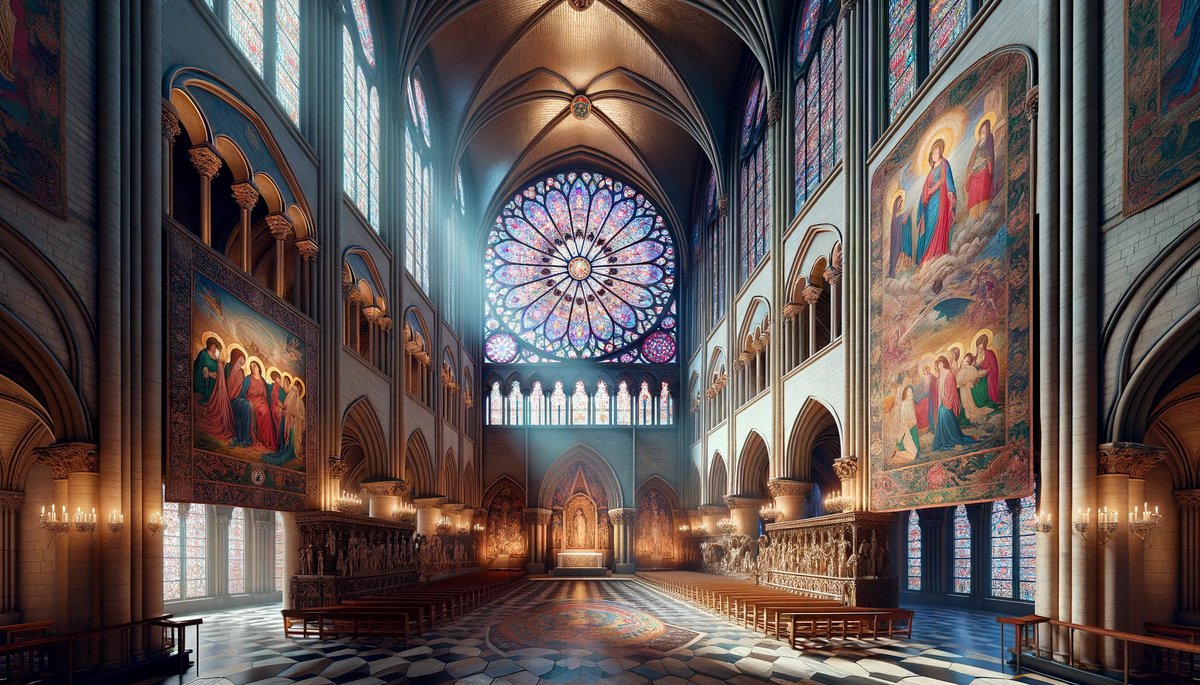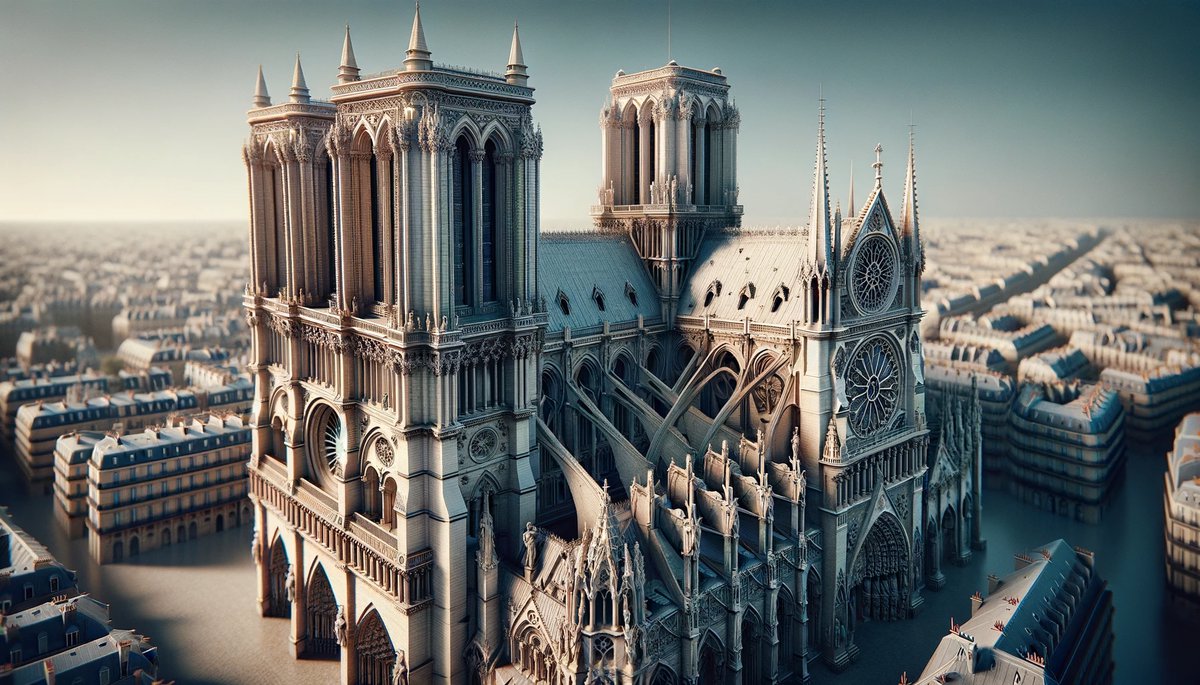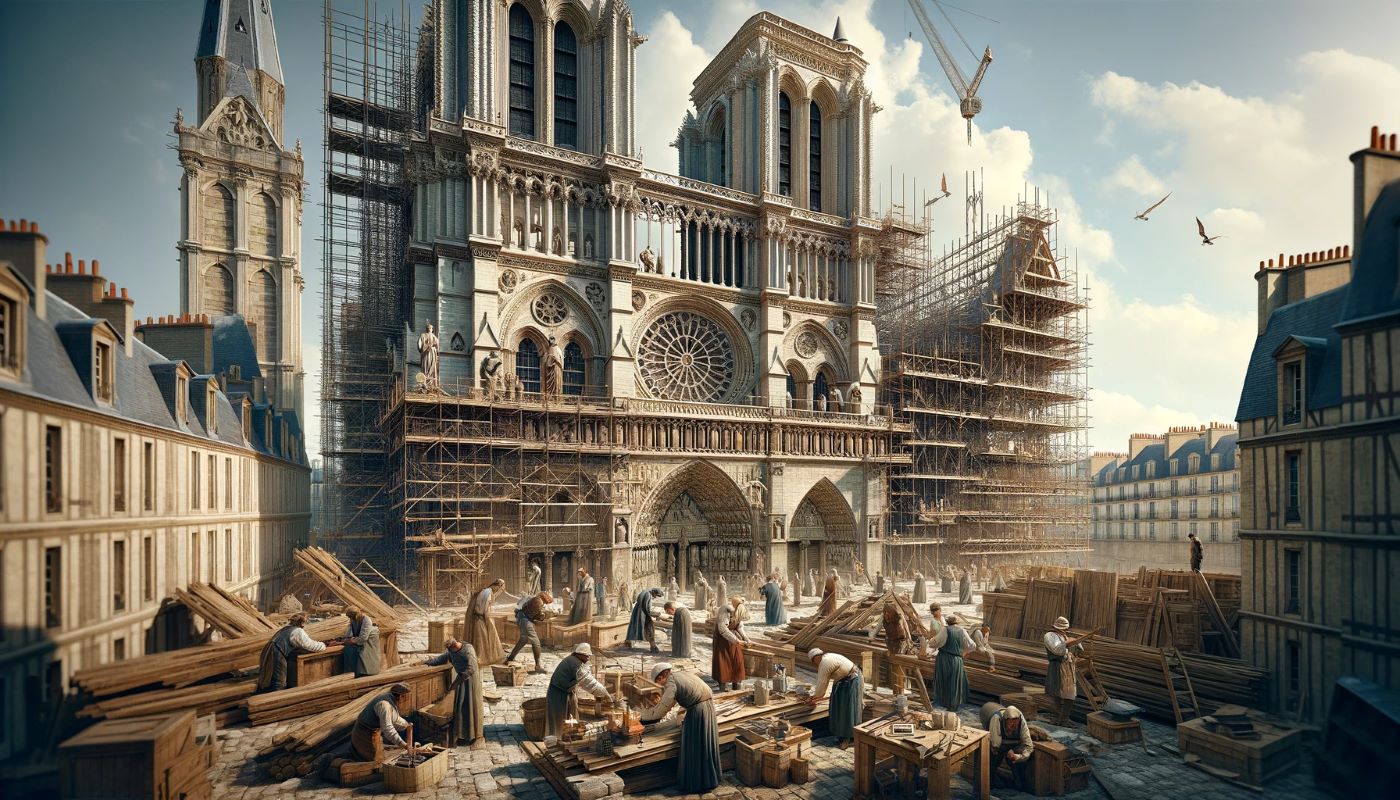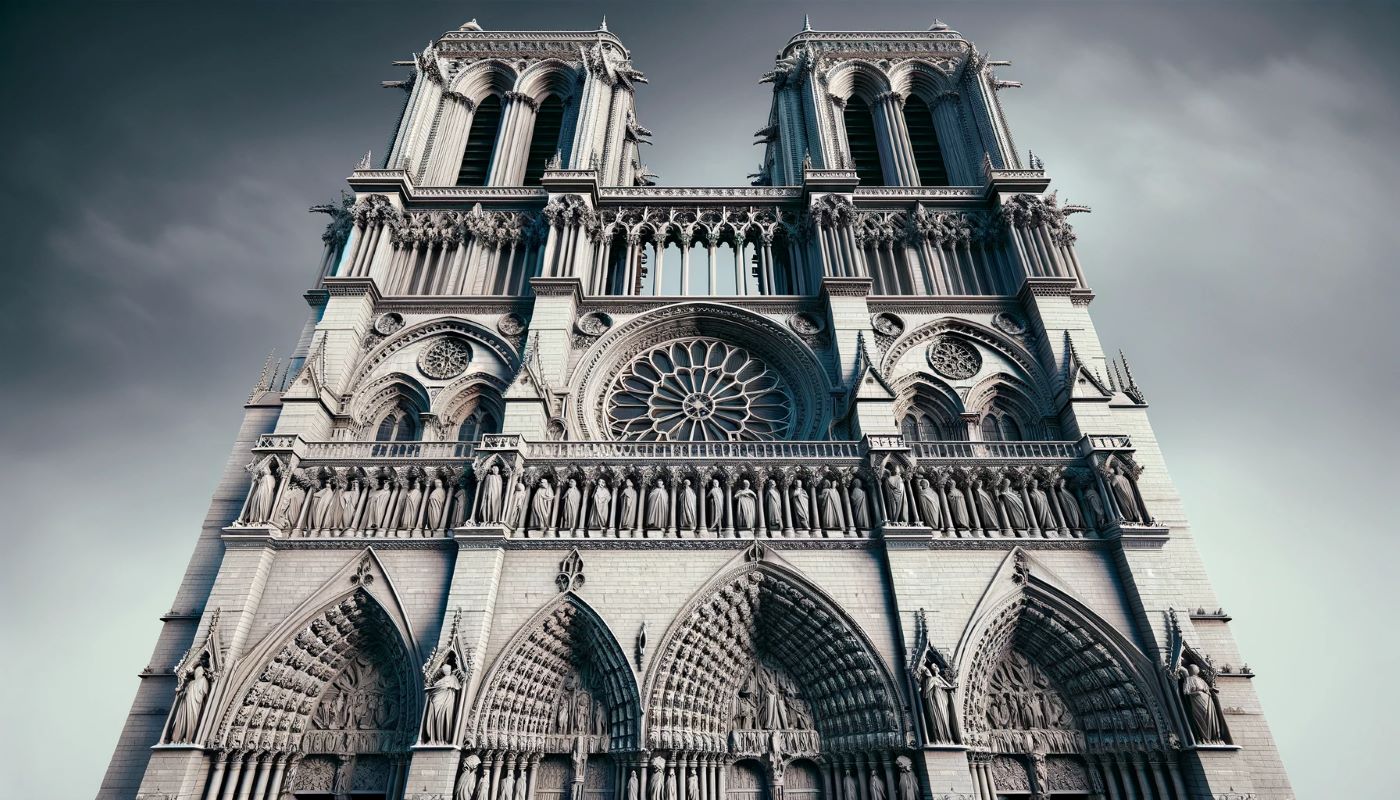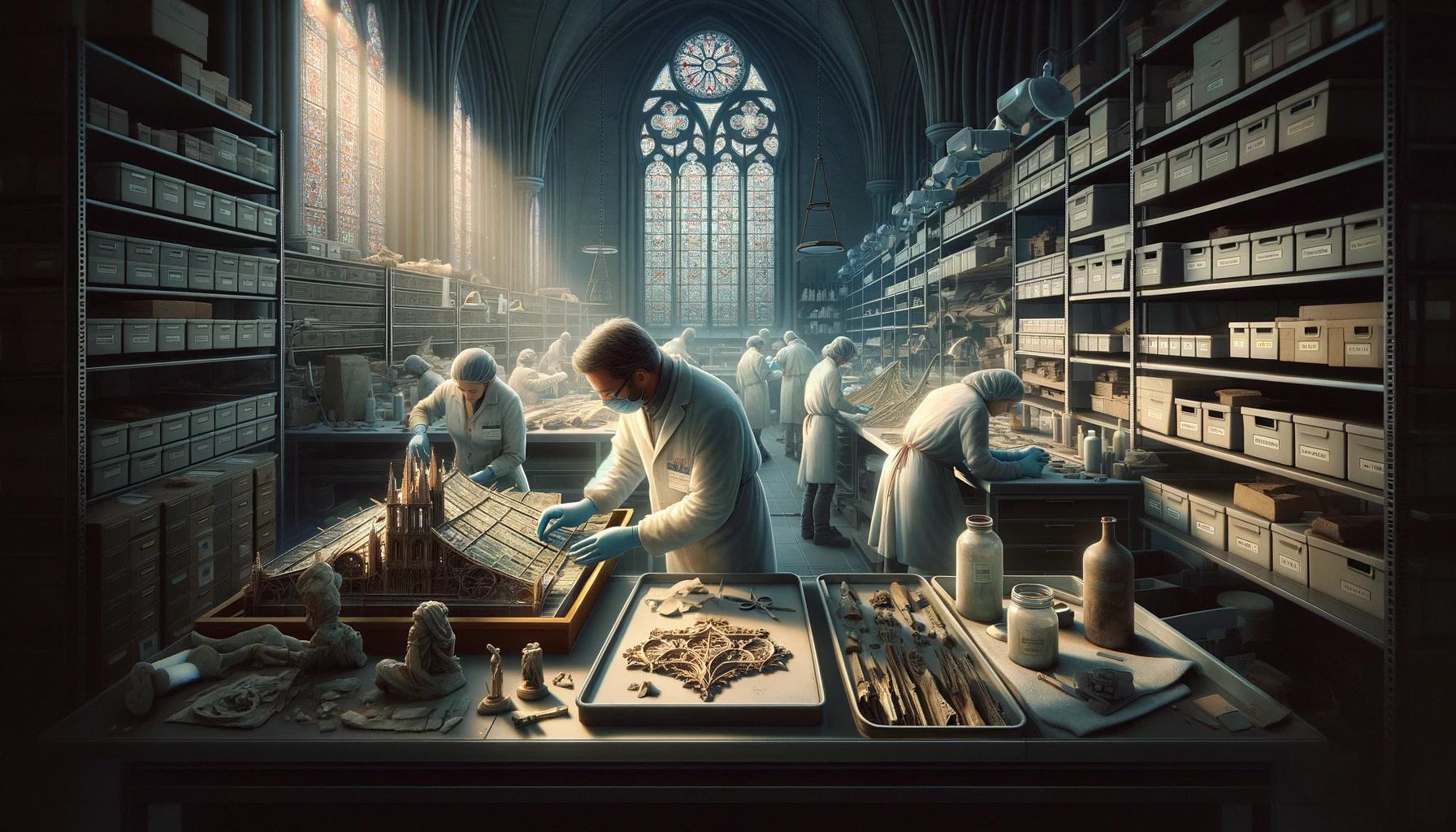Home>Arts and Culture>Who Designed Notre Dame Cathedral
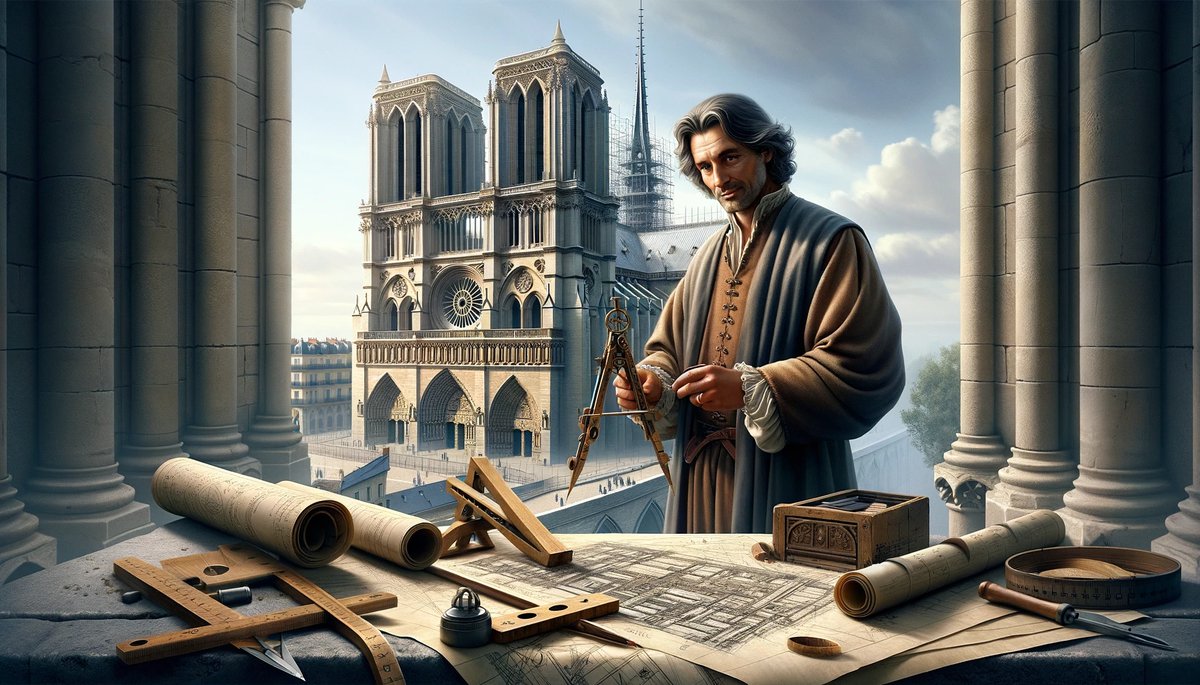

Arts and Culture
Who Designed Notre Dame Cathedral
Published: February 16, 2024
Ericka Andersen, an editor at Christian.net, expertly merges digital strategy with content creation, focusing on faith and societal issues. Her communication skills enhance the platform's engaging narratives, fostering meaningful dialogue on belief's impact on society.
Discover the history and architect behind the iconic Notre Dame Cathedral in Paris. Learn about the artistic and cultural significance of this architectural masterpiece. Explore the art and culture of Notre Dame Cathedral.
(Many of the links in this article redirect to a specific reviewed product. Your purchase of these products through affiliate links helps to generate commission for Christian.net, at no extra cost. Learn more)
Table of Contents
Introduction
Notre Dame Cathedral, a timeless symbol of Paris, stands as a testament to the ingenuity and artistry of its creators. This architectural masterpiece has captivated the hearts and minds of people from around the world for centuries, drawing millions of visitors annually to marvel at its grandeur. The story of Notre Dame Cathedral is a rich tapestry woven with historical significance, artistic brilliance, and unwavering resilience.
From its awe-inspiring façade adorned with intricate sculptures to its soaring spires that seem to touch the heavens, Notre Dame Cathedral embodies the pinnacle of Gothic architecture. Its construction represents a convergence of human ambition and divine inspiration, a harmonious blend of faith and craftsmanship that has withstood the test of time.
As we delve into the history of Notre Dame Cathedral, we embark on a journey through the annals of medieval Europe, where the vision of a grand cathedral took root amidst the bustling streets of Paris. The narrative unfolds with the fervor of Bishop Maurice de Sully, whose unwavering dedication and foresight laid the foundation for the cathedral's enduring legacy. The architectural marvel of Notre Dame Cathedral, with its intricate design and structural innovations, reflects the boundless creativity and technical prowess of its master builders.
In the following sections, we will unravel the captivating tale of Notre Dame Cathedral, exploring the early history, the architectural design and construction, the influence of Gothic architecture, the master builders behind its creation, and the subsequent renovations and additions that have shaped its identity over the centuries. Through this exploration, we will gain a profound appreciation for the indelible mark left by the visionaries and artisans who brought Notre Dame Cathedral to life, leaving an indelible imprint on the cultural landscape of Paris and the world at large.
Read more: Who Insured Notre Dame Cathedral
The Early History of Notre Dame Cathedral
The early history of Notre Dame Cathedral is steeped in the rich tapestry of medieval Paris, a time when the city was undergoing a period of profound transformation. The origins of the cathedral can be traced back to the 12th century when Bishop Maurice de Sully envisioned a grand monument that would stand as a testament to the glory of God and the burgeoning power of Paris as a burgeoning center of culture and faith.
Construction of the cathedral commenced in 1163 during the reign of King Louis VII, marking the dawn of an ambitious endeavor that would span centuries. The site chosen for Notre Dame Cathedral held deep significance, as it was believed to have been the location of earlier religious structures, including a Roman temple and a basilica dedicated to Saint Stephen.
The foundation stone was laid in the presence of Pope Alexander III, signaling the commencement of a monumental undertaking that would shape the skyline of Paris for generations to come. The early years of construction saw the cathedral begin to take shape, with the choir and the eastern part of the nave being completed first, showcasing the emerging Gothic architectural style that would come to define Notre Dame.
The cathedral's construction unfolded amidst the bustling energy of medieval Paris, with skilled artisans and laborers working tirelessly to bring Bishop Maurice de Sully's vision to fruition. The soaring vaults, majestic rose windows, and ornate sculptures began to adorn the cathedral, captivating the imagination of all who beheld its splendor.
Notre Dame Cathedral's early history is also marked by the evolving artistic and architectural trends of the era, as the transition from Romanesque to Gothic design principles became increasingly evident in its construction. The innovative use of flying buttresses, pointed arches, and ribbed vaults set Notre Dame apart as a pioneering example of Gothic architecture, signaling a departure from the traditional styles of the past.
As the cathedral continued to rise skyward, it became a focal point of Parisian life, serving as a place of worship, a center of learning, and a symbol of civic pride. The early history of Notre Dame Cathedral reflects the unwavering dedication of its creators, who labored tirelessly to craft a monument that would transcend time and inspire awe for centuries to come.
The Role of Bishop Maurice de Sully
Bishop Maurice de Sully, a visionary leader and devout servant of the church, played a pivotal role in the conception and realization of Notre Dame Cathedral. Born in the late 11th century, Maurice de Sully ascended to the position of Bishop of Paris in 1160, bringing with him a fervent desire to elevate the spiritual and architectural landscape of the city.
Maurice de Sully's vision for Notre Dame Cathedral stemmed from a deep-seated commitment to glorifying the divine through grandeur and magnificence. Recognizing the need for a grand cathedral that would befit the burgeoning prominence of Paris, he embarked on an ambitious endeavor to oversee the construction of a monument that would stand as a testament to the city's faith and cultural vitality.
As the driving force behind the cathedral's inception, Maurice de Sully demonstrated unwavering determination and foresight in bringing his vision to fruition. His influence extended beyond the realm of ecclesiastical affairs, as he leveraged his position to garner royal support and secure the necessary resources for the cathedral's construction.
Maurice de Sully's role extended beyond mere patronage, as he actively participated in the planning and design of Notre Dame Cathedral, infusing it with his profound understanding of sacred architecture and spiritual symbolism. His keen insight into the intersection of faith and artistry shaped the cathedral's form and function, imbuing it with a sense of divine purpose and transcendent beauty.
Under his guidance, the cathedral began to take shape, embodying the aspirations of a burgeoning city and the unwavering devotion of its people. Maurice de Sully's legacy as the visionary patron of Notre Dame Cathedral endures as a testament to the enduring power of human ambition and spiritual devotion, leaving an indelible mark on the cultural heritage of Paris and the world at large.
In the annals of history, Bishop Maurice de Sully's name is forever intertwined with the soaring spires and resplendent beauty of Notre Dame Cathedral, a testament to his enduring legacy as a visionary leader and patron of the arts. His profound impact on the architectural and spiritual landscape of Paris serves as a timeless reminder of the transformative power of a singular vision, etched in stone and spirit for generations to come.
The Architectural Design and Construction
The architectural design and construction of Notre Dame Cathedral stand as a testament to the ingenuity and artistry of the medieval master builders who brought this iconic structure to life. The cathedral's design reflects a harmonious blend of Gothic architectural principles, innovative engineering techniques, and profound spiritual symbolism, culminating in a monument that continues to inspire awe and admiration.
At the heart of Notre Dame's architectural design is the pioneering use of Gothic elements, which set it apart as a groundbreaking example of medieval engineering and artistic innovation. The cathedral's soaring vaults, pointed arches, and ribbed vaulting exemplify the Gothic style, emphasizing verticality and lightness to create a sense of ethereal grandeur. These architectural features not only served structural purposes but also conveyed a profound spiritual symbolism, inviting worshippers to gaze heavenward in reverence and awe.
The construction of Notre Dame Cathedral was a monumental undertaking that spanned over a century, requiring the collective expertise of skilled craftsmen, stonemasons, and laborers. The use of flying buttresses, a defining characteristic of Gothic architecture, allowed for the creation of expansive stained glass windows and lofty interior spaces, infusing the cathedral with an ethereal luminosity that transcends earthly confines.
The meticulous craftsmanship evident in the cathedral's intricate sculptures, gargoyles, and decorative elements speaks to the unwavering dedication of the artisans who labored to adorn Notre Dame with unparalleled beauty. Each sculpted figure and ornate detail reflects a profound reverence for the divine, serving as a visual testament to the spiritual aspirations of the medieval craftsmen who imbued their work with transcendent meaning.
Notre Dame Cathedral's construction unfolded amidst the bustling energy of medieval Paris, with skilled artisans and laborers working tirelessly to bring Bishop Maurice de Sully's vision to fruition. The cathedral's soaring vaults, majestic rose windows, and ornate sculptures began to adorn the cathedral, captivating the imagination of all who beheld its splendor.
The architectural design and construction of Notre Dame Cathedral stand as a testament to the indomitable spirit of human creativity and the enduring legacy of Gothic architecture. As we marvel at the resplendent beauty of Notre Dame, we are reminded of the timeless allure of a structure that transcends the boundaries of time and space, inviting us to contemplate the boundless heights of human achievement and spiritual aspiration.
The Influence of Gothic Architecture
The influence of Gothic architecture extends far beyond the physical structures it produced, permeating the cultural, artistic, and spiritual landscape of medieval Europe and leaving an indelible mark on the evolution of architectural design. Emerging in the 12th century, Gothic architecture represented a departure from the prevailing Romanesque style, introducing innovative structural elements and design principles that revolutionized the way buildings were conceived and constructed.
At the heart of Gothic architecture lies a profound emphasis on verticality and light, achieved through the use of pointed arches, ribbed vaults, and flying buttresses. These architectural innovations allowed for the creation of soaring interior spaces flooded with natural light, imparting a sense of ethereal grandeur and spiritual transcendence. The vertical thrust of Gothic cathedrals, exemplified by the towering spires and expansive windows of structures like Notre Dame Cathedral, sought to elevate the human spirit and inspire awe through the play of light and shadow.
The advent of Gothic architecture also heralded a shift in the relationship between the divine and the human, as the intricate ornamentation and sculptural elements of Gothic cathedrals served as a visual expression of spiritual devotion and theological narratives. The elaborate sculptures, gargoyles, and decorative motifs adorning these structures conveyed profound religious symbolism, inviting worshippers to contemplate the mysteries of faith and salvation.
Moreover, the construction of Gothic cathedrals served as a testament to the collective aspirations and ingenuity of medieval society, reflecting the collaborative efforts of skilled craftsmen, stonemasons, and artisans who labored to bring these monumental edifices to life. The intricate tracery of stained glass windows, the delicate filigree of stone carvings, and the meticulous craftsmanship evident in every facet of Gothic architecture bear witness to the unwavering dedication and technical prowess of the master builders of the era.
The enduring legacy of Gothic architecture resonates in the timeless allure of structures such as Notre Dame Cathedral, serving as a testament to the enduring power of human creativity and spiritual aspiration. As we gaze upon the resplendent beauty of these architectural marvels, we are reminded of the profound impact of Gothic architecture on shaping the cultural and artistic identity of Europe, inspiring generations with its transcendent beauty and unwavering devotion to the divine.
Read more: Notre Dame Cathedral: Who Is Buried There
The Master Builders of Notre Dame
The construction of Notre Dame Cathedral was a monumental feat that required the collective expertise of master builders, artisans, and craftsmen whose ingenuity and skill brought this architectural marvel to life. At the forefront of this ambitious endeavor were the master builders, whose visionary leadership and technical acumen shaped the cathedral's form and structure, leaving an indelible mark on the architectural landscape of medieval Paris.
Among the most renowned master builders associated with Notre Dame Cathedral is the enigmatic figure known as "Maître de Chelles." Believed to have overseen the early phases of construction, Maître de Chelles played a pivotal role in implementing the innovative Gothic design principles that would come to define the cathedral. His mastery of architectural techniques, including the use of flying buttresses and ribbed vaults, laid the foundation for the soaring interior spaces and luminous grandeur that distinguish Notre Dame.
As the construction of Notre Dame progressed, another master builder, known as "Maître de Sully," assumed leadership, further advancing the cathedral's structural innovations and artistic embellishments. Under his guidance, the cathedral's iconic features, such as the majestic rose windows and intricately sculpted façade, began to take shape, showcasing the masterful craftsmanship and artistic vision of the builders under his command.
The master builders of Notre Dame Cathedral were not only skilled technicians but also visionary artists who imbued their work with profound spiritual symbolism and transcendent beauty. Their meticulous attention to detail is evident in every aspect of the cathedral, from the delicate tracery of the stained glass windows to the intricate carvings adorning the portals and spires. Each element reflects a synthesis of technical expertise and artistic expression, underscoring the master builders' unwavering dedication to creating a monument that would inspire awe and reverence for generations to come.
The legacy of the master builders endures in the resplendent beauty of Notre Dame Cathedral, a testament to their collective genius and unwavering commitment to pushing the boundaries of architectural innovation. Their names may be lost to history, but their enduring legacy lives on in the soaring vaults, ethereal luminosity, and timeless allure of a structure that stands as a testament to the indomitable spirit of human creativity and the enduring legacy of Gothic architecture.
The Renovations and Additions
The history of Notre Dame Cathedral is punctuated by a series of renovations and additions that have both preserved its architectural splendor and adapted it to the evolving needs of successive generations. Over the centuries, Notre Dame has undergone numerous transformations, each bearing the imprint of the cultural, artistic, and technological trends of its time.
One of the most significant periods of renovation occurred in the 13th century when the cathedral underwent extensive modifications, including the addition of the iconic rose windows and the construction of the transepts. These enhancements not only enriched the visual grandeur of Notre Dame but also expanded its spatial layout, creating a more expansive and luminous interior that beckoned worshippers into a realm of transcendent beauty.
In the 18th century, Notre Dame underwent a period of restoration and refurbishment under the direction of architect Robert de Cotte, who sought to revitalize the cathedral's aging structure and preserve its historical significance. This endeavor involved the meticulous repair of weathered stonework, the reinforcement of structural elements, and the introduction of decorative elements that reflected the prevailing artistic sensibilities of the era.
The 19th century witnessed a transformative phase of renovation spearheaded by architect Eugène Viollet-le-Duc, whose visionary restoration efforts breathed new life into Notre Dame. Viollet-le-Duc's interventions ranged from the meticulous reconstruction of the spire to the restoration of the iconic gargoyles and the addition of decorative elements that harmonized with the cathedral's original design. His meticulous approach to preservation and enhancement ensured that Notre Dame remained a living testament to the enduring legacy of Gothic architecture.
In the aftermath of the devastating fire of 2019, Notre Dame Cathedral stands poised for a new chapter of restoration and renewal. The global outpouring of support and the commitment to rebuilding the cathedral have set the stage for a monumental endeavor that will once again infuse Notre Dame with vitality and purpose, ensuring that its timeless beauty continues to inspire future generations.
The renovations and additions that have shaped Notre Dame Cathedral over the centuries stand as a testament to the enduring significance of this architectural masterpiece. Each phase of transformation reflects a delicate balance between preservation and adaptation, honoring the cathedral's storied past while embracing the promise of its future. As Notre Dame embarks on a new era of restoration, it stands as a symbol of resilience and renewal, embodying the timeless spirit of human creativity and the enduring legacy of architectural excellence.
Conclusion
In conclusion, the story of Notre Dame Cathedral is a testament to the enduring legacy of human creativity, spiritual devotion, and architectural excellence. From its humble beginnings in the 12th century to its enduring presence as a cultural icon, Notre Dame Cathedral has stood as a beacon of artistry and faith, captivating the hearts and minds of people from around the world.
The early history of Notre Dame Cathedral reflects the visionary leadership of Bishop Maurice de Sully, whose unwavering dedication and foresight laid the foundation for this architectural marvel. The cathedral's construction, guided by the principles of Gothic architecture, exemplified a harmonious blend of technical innovation and spiritual symbolism, creating a structure that transcended the boundaries of time and space.
The master builders of Notre Dame Cathedral, including the enigmatic figures known as "Maître de Chelles" and "Maître de Sully," infused the cathedral with their collective genius, shaping its form and structure with unparalleled skill and artistry. Their meticulous attention to detail and unwavering commitment to excellence are evident in every facet of the cathedral, from its soaring vaults to its intricate sculptures.
The influence of Gothic architecture, as embodied by Notre Dame Cathedral, extends far beyond its physical form, permeating the cultural and artistic identity of medieval Europe. The cathedral's resplendent beauty and ethereal luminosity stand as a testament to the enduring power of human creativity and spiritual aspiration, inspiring awe and reverence for generations to come.
The renovations and additions that have shaped Notre Dame Cathedral over the centuries reflect a delicate balance between preservation and adaptation, honoring its storied past while embracing the promise of its future. As Notre Dame embarks on a new era of restoration following the devastating fire of 2019, it stands as a symbol of resilience and renewal, embodying the timeless spirit of human creativity and the enduring legacy of architectural excellence.
In the annals of history, Notre Dame Cathedral remains a testament to the indomitable spirit of human ingenuity and the enduring power of architectural masterpieces to transcend time and inspire generations. Its timeless allure continues to beckon visitors from across the globe, inviting them to marvel at the resplendent beauty of a structure that stands as a living testament to the boundless heights of human achievement and spiritual aspiration.
